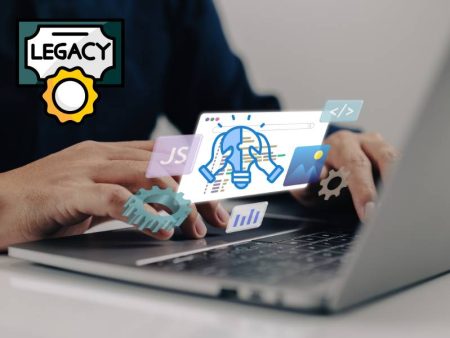Let me ask you—have you ever sat there, coffee in hand, typing wild prompts like “a neon samurai riding an owl over a cyberpunk skyline”, only to end up with something… off? And then you wonder: Which Image AI is actually worth it today?
Here’s the deal: Midjourney, DALL·E, and Stable Diffusion have been duking it out for quality, creativity, ethics, and flexibility. You’ve seen the hype. You’ve played around. But in 2025, with so many updates and new features, who really wins?
Buckle up, because we’re diving deep. I’ll walk through their strengths, weaknesses, creative quirks, and when each one might actually shine in your daily creative flow.
🌟 Setting the Stage: A Quick Look
| Model | Creative Quality | Ease of Use | Flexibility & Control | Ethical Safeguards | Cost & Accessibility |
| Midjourney | Ultra-stylized, dreamy | Chat-based prompts | Modifiers, stylize params | Moderate filters | Subscription-based |
| DALL·E (OpenAI) | Clean, versatile | Simple UI & API | Inpainting, editing | Strong filters | Per-image credit system |
| Stable Diffusion | Open-source, tunable | Local installs/UI | Fine-tuning, pipelines | Varies by frontend | Free/open-source + paid options |
You’ve seen variations of that table all over Reddit, sure—but the truth is, your needs decide the winner. So, let’s break it down.
🤖 Model 1: Midjourney (The Dream Weaver)
When I first stumbled onto Midjourney, it felt like stepping into an art gallery inside a dream. That surreal lighting, painterly textures, the kind of whimsy that grips your imagination.
It lives in Discord—no fancy apps. You type /imagine and your prompt. Want moody cinematic lighting? Add –stylize 1000. Change the aspect ratio? –ar 16:9 does that.
What I love:
- It’s immediate and immersive. Typing in Discord feels like chatting with a creative buddy who reads your mind.
- The art feels intentionally stylized. That pastel noir or dreamy comic-like edge? Unique.
- It inspires—sometimes, the output surprises you with directions you hadn’t thought of.
But here’s where it’s not perfect:
- You may get inconsistent results in realism-heavy tasks (like designing UI mockups or logos).
- There’s a soft content policy—you can’t generate explicit NSFW material. Depends how much you care.
- Subscription costs: tiers offer varying image allowances. Great value if you’re creating a lot, meh if you’re casual.
🧠 Model 2: DALL·E (The Clean Editor)
Next up, DALL·E. Think of it as the Swiss Army knife of image AI—versatile, clean, and effective, but with strong ethical guardrails.
You type your prompt in a polished UI—and if you’re on the web, there’s an image grid to review. Every output is crisp, clear, and often jarringly accurate to the prompt.
Why I’m a fan:
- The inpainting feature is a game-changer. Want to replace the handle on a mug or add sunglasses on a dog? Done.
- Text handling guidelines have improved—no more half-legible signage in your welcoming poster.
- It’s super easy to use, even for total beginners.
Limitations worth noting:
- It’s intentionally safe—no nudity, no gore. If creative edge is your vibe, this might feel… tamed.
- Credits-based pricing can add up if you’re generating hundreds of rapid-fire prompts.
- Style tends toward realism or polished illustration. If you’re going full surreal, sometimes you’re nudged back into mainstream art territory.
🛠️ Model 3: Stable Diffusion (The Wild Card)
And then there’s Stable Diffusion—your sandbox of infinite possibilities. Open-source, left-right freedom, modifiable and hackable to your heart’s content.
You can run it locally, host it on a server, or use a web UI. Want to train your own model on 500 anime images or replicate Van Gogh’s style? Go nuts. Want to be able to circumvent NSFW filters (at your own risk)? Sure, if your frontend allows it.
Why it roars:
- Freedom: Source code available. Want to roll your own augmentations or do batch processing? It’s your playground.
- Edge: Some community models push boundaries, generate pixel-perfect anime characters, or recreate classical paintings.
- Cost: If you’re running locally, you’re only limited by your GPU. That’s game-changing for power users.
But it’s not all rainbows:
- Harder for beginners—installing or choosing a UI can feel overwhelming.
- Quality varies wildly depending on model weights, prompt skill, and your GPU.
- Tobefair—some frontends are responsibly filtered, others center creative freedom by sidelining some restrictions. This variance requires caution.
🎯 Who Should Use What?
Let’s make it simple, practical:
Use Midjourney if…
- You crave vivid, dreamlike, stylized visuals.
- Your creativity thrives in a chat environment.
- You don’t mind paying a subscription for a smooth experience.
- You’re not chasing ultra-strong realism—you’re chasing mood and artistry.
Use DALL·E if…
- You want clean, professional imagery with strong editing tools.
- You need predictable results for business or design tasks.
- You respect ethical boundaries and want robust content filters.
- You need a consistent, foolproof workflow that even a beginner can run.
Use Stable Diffusion if…
- You want full control over models, styles, and filters.
- You’re technically inclined and ready to tinker.
- You want to push the limits—fine-tuning, custom datasets, experimental pipelines.
- You’re okay with managing local setups or trusting responsibly built web UIs.
🎨 A Quick Prompt Test: Same Prompt, Three AIs
Prompt used: “A futuristic city skyline at sunset, with flying cars and neon billboards.”
- Midjourney output: painterly aesthetics, dreamy color gradients, cinematic atmosphere.
- DALL·E output: detailed realism, crisp buildings and cars, balanced contrast.
- Stable Diffusion (with a sci-fi fine-tuned model): sharp neon signs, edgy stylization, perhaps a bit noisier—but bold.
The outputs each bring something different. None is strictly better—just different tools for different moods.
🎁 Bonus Picks: When You Want No Restrictions
Sometimes you just need raw, creative freedom. No filters. No censorship. If that’s you:
- Use an AI Art Generator that pushes creative boundaries—one that doesn’t shy away from abstract or mature themes. You retain expressive control while still benefiting from AI generative power.
- Or choose an AI Image Generator Without NSFW Restrictions, if you’re exploring edge visuals for artistic portfolios or mature-themed work—in spaces that permit it responsibly.
- For those who crave just text-to-image, no holds barred, go for an Unfiltered AI Image Maker From Text—it’s a lifeline for visual experimentation, provided you use it mindfully and legally.
⚠️ A word of caution: With great power comes responsibility—obey local laws, respect copyright, and be mindful of ethical use.
❤️ My Personal Take
I’ve been messing with all three for years now. Here’s where I stand:
- Midjourney: My go-to for moodboards, concept art, fanciful visuals that evoke emotion. Something sparks when I see its outputs—I feel something.
- DALL·E: My business side’s best friend—great for product mockups, client-ready art, and anything requiring tight editing.
- Stable Diffusion: My tinkerer’s toy. I love spinning up custom models, testing fine-tuned anime pipelines, and experimenting. It’s raw, and sometimes glitchy—but endlessly educational.
It’s like asking, “What’s better, oil paint, watercolor, or digital?” They all have their place.
🛡️ Ethics & Safety in 2025
In 2025, AI image models carry more responsibility than ever:
- Copyright & dataset issues: Know the terms of use—some models are licensed for commercial use, others are not.
- Bias & misuse: Tools with minimal filters often generate biased or misleading content unless carefully managed.
- NSFW and adult content: If you’re exploring with open models, be cautious. Use tools like Unfiltered AI Image Maker From Text responsibly—not for harmful or illegal content.
Creators deserve freedom. Users deserve safety. The sweet spot? Transparency and respect.
🛠️ Practical Tips: Getting the Best from Each
- Midjourney:
- Prompt tip: use [concept], cinematic lighting, pastel palette –stylize 750 –ar 16:9.
- Take advantage of remix features to refine style without restarting.
- Use variants to explore branching styles from the same idea.
- DALL·E:
- Try inpainting to edit generated images quickly.
- Use robust prompting with adjectives—like “ultra-realistic, macro detail.”
- Experiment with editing your own uploads for perfect replacements.
- Stable Diffusion:
- Choose a reliable frontend: Automatic1111, InvokeAI, etc.
- Explore DreamBooth or LoRA for personalized fine-tuning.
- Use checkpoint management—switch between weights for different art styles.
🧩 When Mix-and-Match Works Well
Why stick to one? I’ve found mixed workflows are powerful:
- Brainstorm in Midjourney for mood and texture inspiration.
- Finalize in DALL·E for clean marketing visuals.
- Experiment in Stable Diffusion for technical or niche exploration.
- Combine outputs—use Midjourney’s concept, touch it up in DALL·E, add obscure textures in SD.
Your creative flow can be multi-tool. That’s where the magic happens.
❤️ Final Verdict: Who Wins in 2025?
There is no single winner. Your mission, style, workflow determine the champion.
- For artists and concept designers: Midjourney rules.
- For UI/UX mockups and polished outputs: DALL·E shines.
- For tinkerers, coders, experimenters: Stable Diffusion is unmatched.
And for moments where you want total creative breathing room—try an Unfiltered AI Image Maker From Text or stretch into NSFW-permissive spaces with an AI Image Generator Without NSFW Restrictions. Just stay ethically grounded.
🎉 Over to You
Which one are you vibing with in 2025? Have you tried stacking them? Battled with their quirks? I’d love to hear about your prompt wins, your failures, your most scramble-for-coffee-all-night sessions.
Comment below and let’s keep this creative conversation flowing.
And if you want help with prompts, workflows, or blending these tools—my DMs (well, comment box) are wide open.
Stay creative. Stay curious. The AI art future is bright—and it’s yours to paint. 🎨


